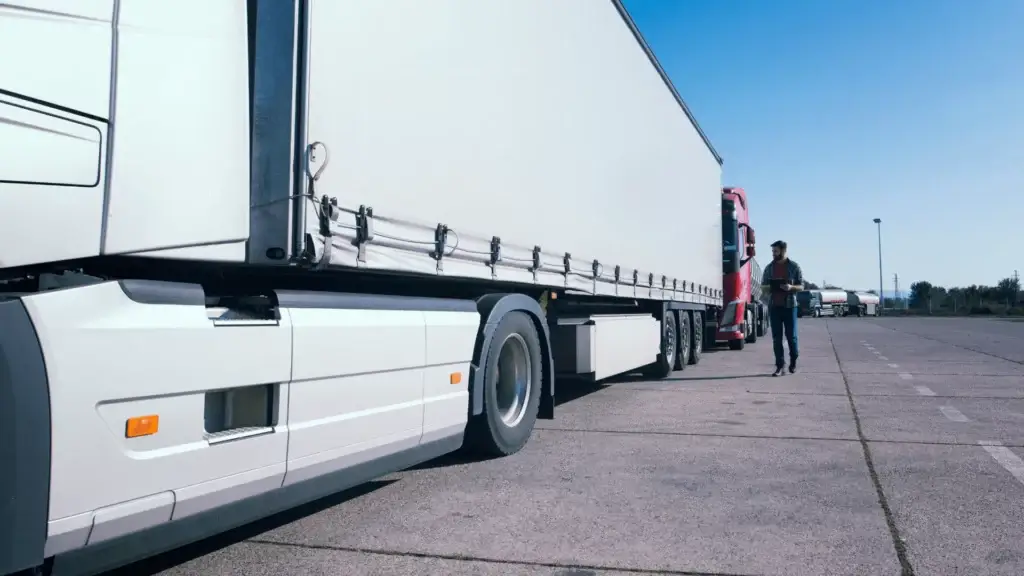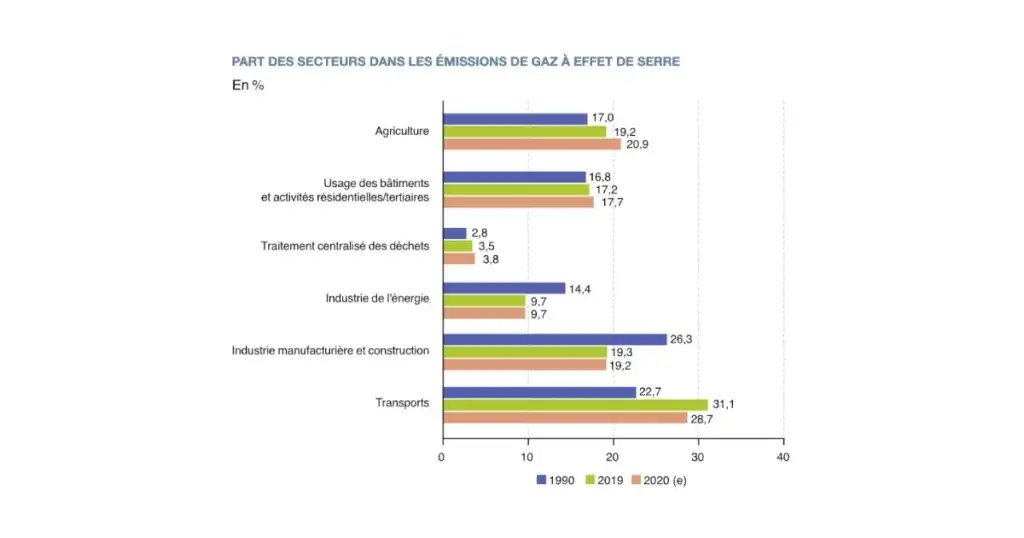
Source: L'environnement en France
The advantages of electric trucks
Another advantage that will drive manufacturers to produce more and more electric trucks is noise pollution. In fact, electric vehicles are particularly quiet compared to their combustion counterparts. Compared to combustion engines, they are made up of fewer moving parts, which move uniformly, enabling them to travel almost silently in all circumstances. This gain in silence is a great benefit to drivers, who were unable to travel in certain areas with combustion-powered trucks, which were too noisy for certain urban areas.
Electric trucks: the big manufacturers get on board
With this in mind, more and more manufacturers are turning to electric trucks, such as Mercedes, Tesla and even Renault.
There are also many technological advances are making their appearance to facilitate the development of electric trucks. This is demonstrated by the record set by Swiss manufacturer Futuricum, who drove their truck 1,099 kilometers in 23 hours, without recharging. It is to be hoped that other manufacturers will emulate these results, so that the system can be deployed more widely.
These will benefit as many people as possible, facilitating the transition and eliminating dependence on combustion-powered trucks.
There are also plans to install fast-charging stations, to make long-distance journeys easier for drivers. Brands such as Volvo Group, Daimler Truck and Traton have already signed a memorandum of understanding for the development of a network in Europe.
The best electric trucks on the market in 2023
Logistics 18E
Now that we've mentioned all the advances that have been made to promote the introduction of electric trucks on the market, we can tackle the models that are already available, or that will soon be arriving.
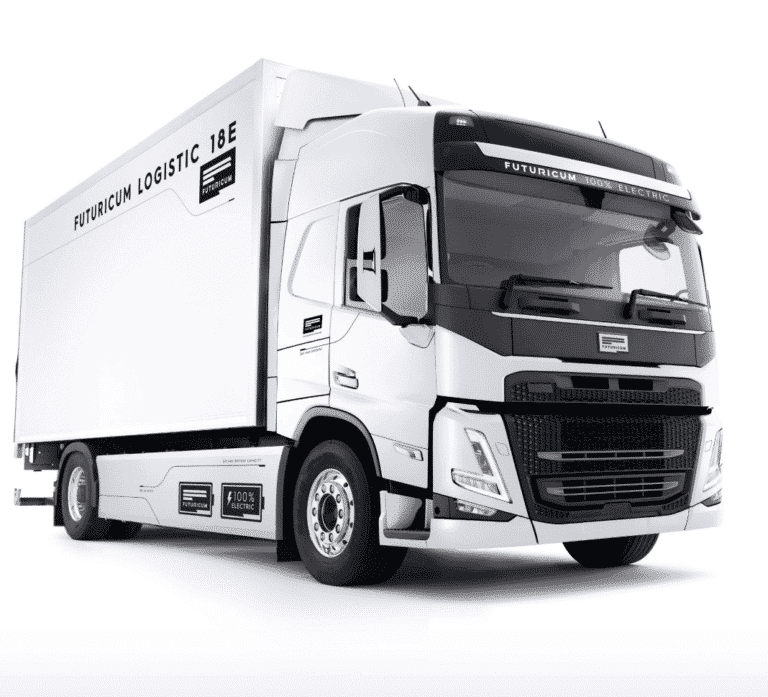
As mentioned in the introduction, with its recordrange of 1,099 kilometers achieved in 23 hours, the Logistics 18E deserves its own paragraph for its outstanding performance. This combination of power, ecology and cost-effectiveness is a little gem from Swiss manufacturer Futuricum.
It has four engines delivering a total of 680 horsepower. A practical feature of the Logistics18E is that the vehicle's batteries can be reused as stationary accumulators or recycled.
The Logistics 18E is limited to 86 km/h due to electrical constraints.
It can be recharged using a 350kW CCS Type 2 system, in just 1 hour and 42 minutes. Under real-world conditions, less optimal than those of the range record, the Logistics 18E can achieve a range of up to 500 km.
Its total weight is 19 tonnes.
Renault Trucks D Wide Z.E
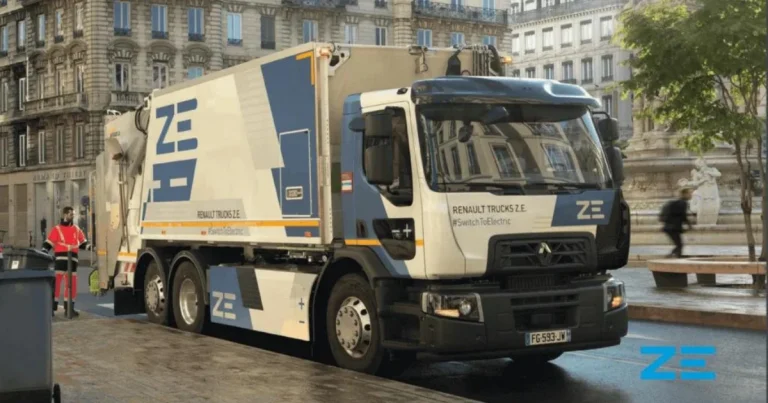
Concerning the Renault Trucks D Wide Z.E, it is designed primarily for the urban environment, and facilitates the collection of waste in this environment. This vehicle can therefore be used in low-emission zones (ZFE) and restricted traffic zones.
It has a payload of up to 11 tonnes, a significant reduction in total weight when used in urban environments.
It has a lithium-ion battery with a capacity of 200 kWh, giving it a range of up to 200 km.On a positive note, it is compatible with fast charging and has a 22kW on-board charger.
It has just 2 electric motors for a maximum power of 500 hp, which is more than enough for its purpose.
Tesla Semi
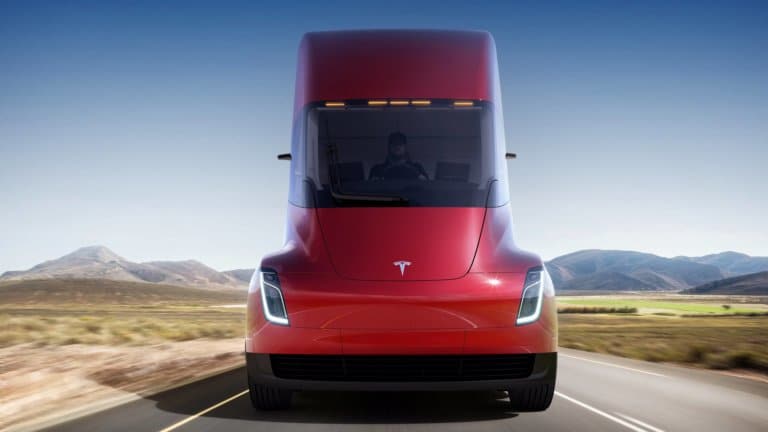
It's time to tackle the big one, the star of this article, the famous Tesla Semi.
As is often the case with Tesla, these models are always eagerly awaited. Tesla is used to generating a lot of excitement among electric vehicle fans. Before getting into the technical details, it's worth noting that this vehicle has been something of a victim of its own success. First presented in 2017, the Tesla Semiwas due to go into production in 2019, with delivery to customers by 2020. Unfortunately, due to events such as pandemics, health crises and the like, production has been greatly delayed until 2021, with deliveries scheduled to begin over the same period.
Tesla has set itself a production rate of 5 assembled trucks per week, the first of which will be used to ensure their own deliveries, and yes, you have to have fun with your own toys sometimes. A number of large companies had already placed orders, but those who ordered their units relatively late will have to be patient, they've been warned. Between the 100 electric trucks ordered by Pepsi and the 50 trucks ordered by Sysco, the Gigafactory in Nevada, the plant responsible for vehicle assembly, is going to be firing on all cylinders.
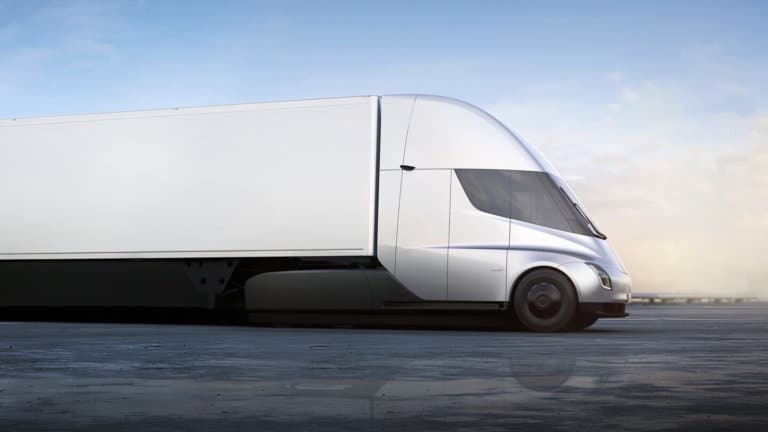
Now we can talk about what's under the hood. The Tesla Semi is defined as "thelsafest truck"as well as the most "comfortable truck ever".
Four independent motors provide acceleration and maximum power, and Tesla's electric truck accelerates from 0 to 100 km/h in 25 seconds, not bad for a 36-tonne truck that runs on electric power. Depending on the model, the Tesla Semi can have a range of between 475 and 800 kilometers, an excellent range for a truck of this size. It's perfect for covering long distances without the need for combustion-powered vehicles.
As you might have guessed, the Tesla Semi doesn't come cheap. You can find it at a sticker price of $190,000 if you want to treat yourself to the one with a 475km range, and $230,000 for the one that promises an 800km range. It's also described as "the safest truck ever". It features an enhanced autopilot system that helps avoid collisions. It allows the driver to relax slightly, but it is specified that he or she must remain vigilant and able to take control if necessary. It also boasts the lowest cost of ownership. In fact, with fewer systems to maintain, it offers over $200,000 in fuel savings and a two-year payback period.
Want to go electric?
Beev offers multi-brand 100% electric vehicles at the best prices, as well as recharging solutions.
Mercedes Eactros
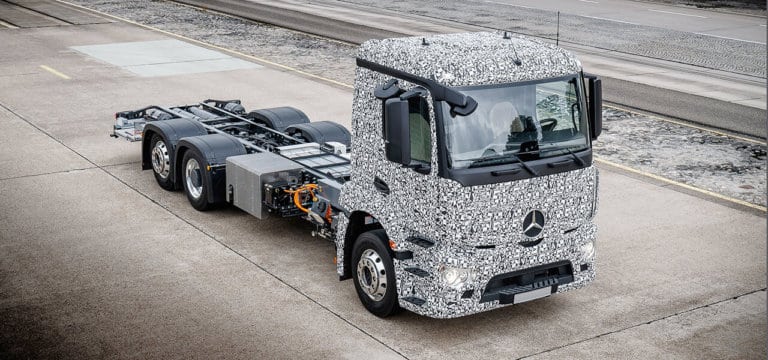
This summer the automotive giant, Mercedesannounced its first 100% electric truck.
Mercedes announced last June the eActros and its promised 400km range. Inspired by the Actros, the eActros is a 3-axle electric truck designed for heavy collection and distribution traffic.
The conventional powertrain was replaced by an electrically driven rear axle with electric motors. The new axle was derived from the electric axle of the hybrid bus Mercedes-Benz Citaro hybrid bus. Power is supplied by a battery pack comprising three lithium-ion battery modules. The result is a range of 200km.
Mercedes has made it very easy to recharge the eActros with a standardized charging system. With a charging power of 160 kW, it takes just over an hour to go from 20% to 80% with three batteries, or 1.5 hours with four batteries, before you can get back on the road. Recharging time also depends on a number of external factors. Like the Tesla Semi, the eActros is equipped with several driver assistance systems to make life easier for the driver.
These include:
- anti-drowsy system for very early morning or very late evening journeys
- direction change assistant
- The driver's cab is also equipped with a fire detector and an alarm system to warn the driver in the event of an emergency.
The Mercedes eActros still has a number of advantages, such as noise emissions of just 60 decibels, which allow night-time deliveries under certain conditions, and emission-based city driving bans that don't apply to it because of its engine.
Freightliner eCascadia
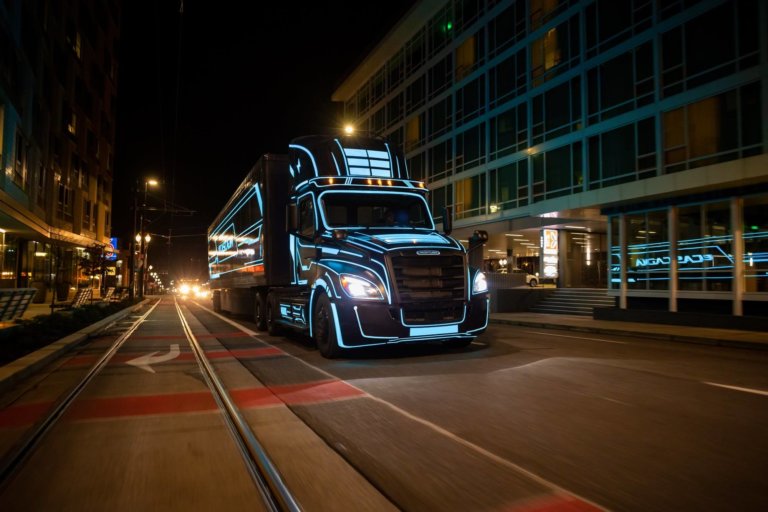
The eCascadia, Freightliner's electric truck, is due to hit the market in 2023. Freightliner has announced that it will go into production in 2022, and should therefore be on the market as early as next year, during 2023. Freightliner, which sells and operates its products mainly in North America, is marking a major milestone with its new product.
The eCascadia offers up to 500 horsepower. It can be powered by Tandem and Axle, according to the company, a flexibility and power that will enable it to tackle a wide range of roads, more or less complicated to access. It has a usable capacity of 475 kWh, enabling it to cover a distance of 400 km. To recharge it to 80%, which is the optimum charging level, you'll need around 90 minutes, which is acceptable compared with current market offerings. What's most surprising about this model is its weight: the eCascadia is fiercely close to 40 tons.
All in all, this model is a safe bet, suitable for a wide range of uses you'd expect from a truck, from city driving to long highway journeys, it'll adapt easily enough. Not what you'd expect from the biggest truck manufacturer in the USA.
Electric trucks: what does the future hold?
As we can see, the electric truck market is still in its infancy, with many electric vehicles appearing featuring a wide range of technologies, which is rather promising for the future. There are already some very attractive models on the market, such as the Tesla Semipresented earlier, as well as the Mercedes eActrosboth of which are technological gems. Obviously, as we move forward, product quality will tend to improve. For this to happen, demand will also have to match supply, and there's no need to worry too much about that, since we've already seen a good number of orders for the new models, notably for the Tesla Semi which, as mentioned earlier, has been a victim of its own success. But there's no doubt that production will keep pace with the large number of orders coming in.
In France, for example, the future is already here. Engie (formerly SUEZ) and Renault have already formed a partnership to ensure that waste collection in the Île-de-France region is carried out by electric trucks, with zero CO2 emissions. The SUEZ Group has set itself the target of reducing its direct and indirect greenhouse gas emissions by more than 45% by 2030.
How much does an electric truck cost?
The price of an electric truck depends on a number of factors. We can only give a price range: from 50,000 euros, which is the price of the Renault Truckto $200,000 for Thor trucks' ET One, for example.
Finally, the price of your electric truck will vary according to what you intend to do with it. The Tesla Semi with its estimated 800 km range, is bound to cost more than the Renault Trucks with its meagre 200 km range, but which will still be more than adequate for city use, as mentioned above. Indeed, paying over $180,000 for the Tesla Semi and its 800 km range for city use would be a bit of a waste, as its potential would be limited.
To find out more :
Read also: How can we meet the challenges of energy transition and sustainable mobility in the regions?
